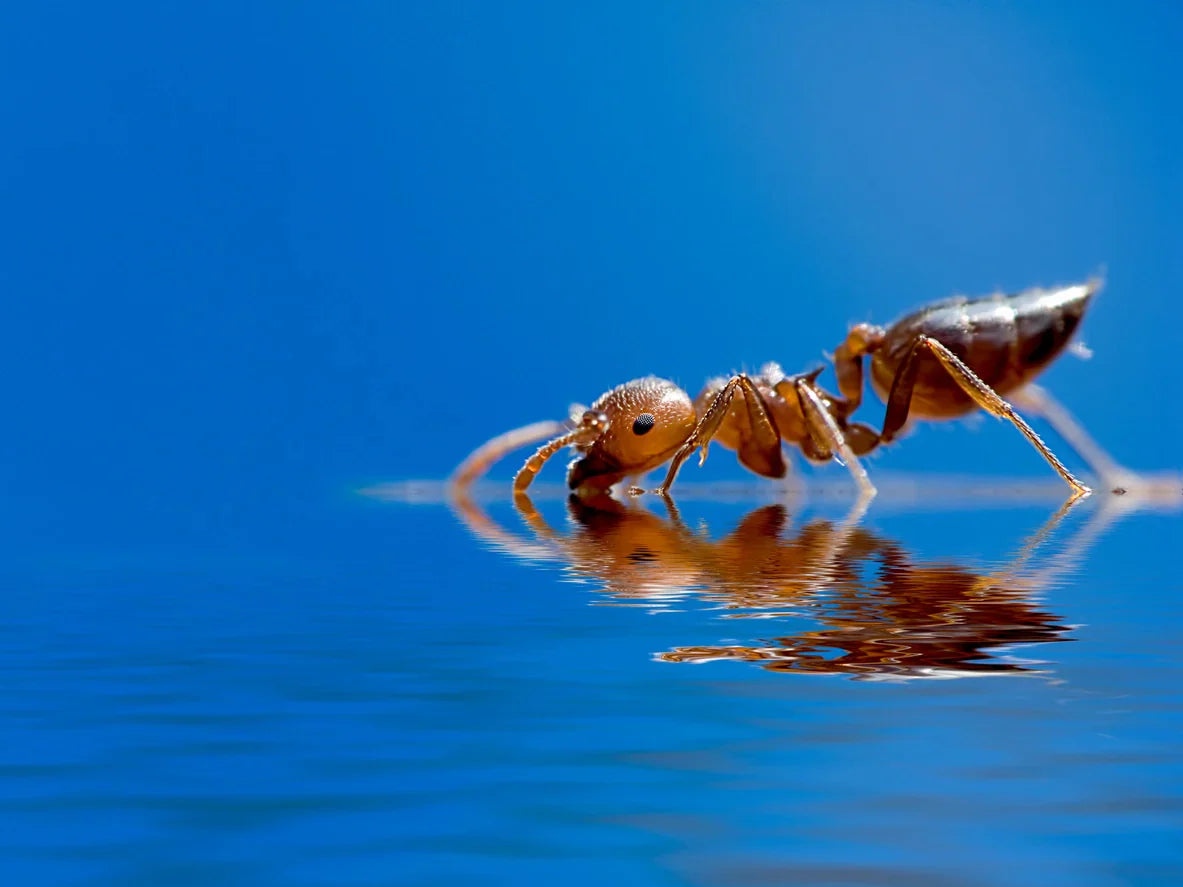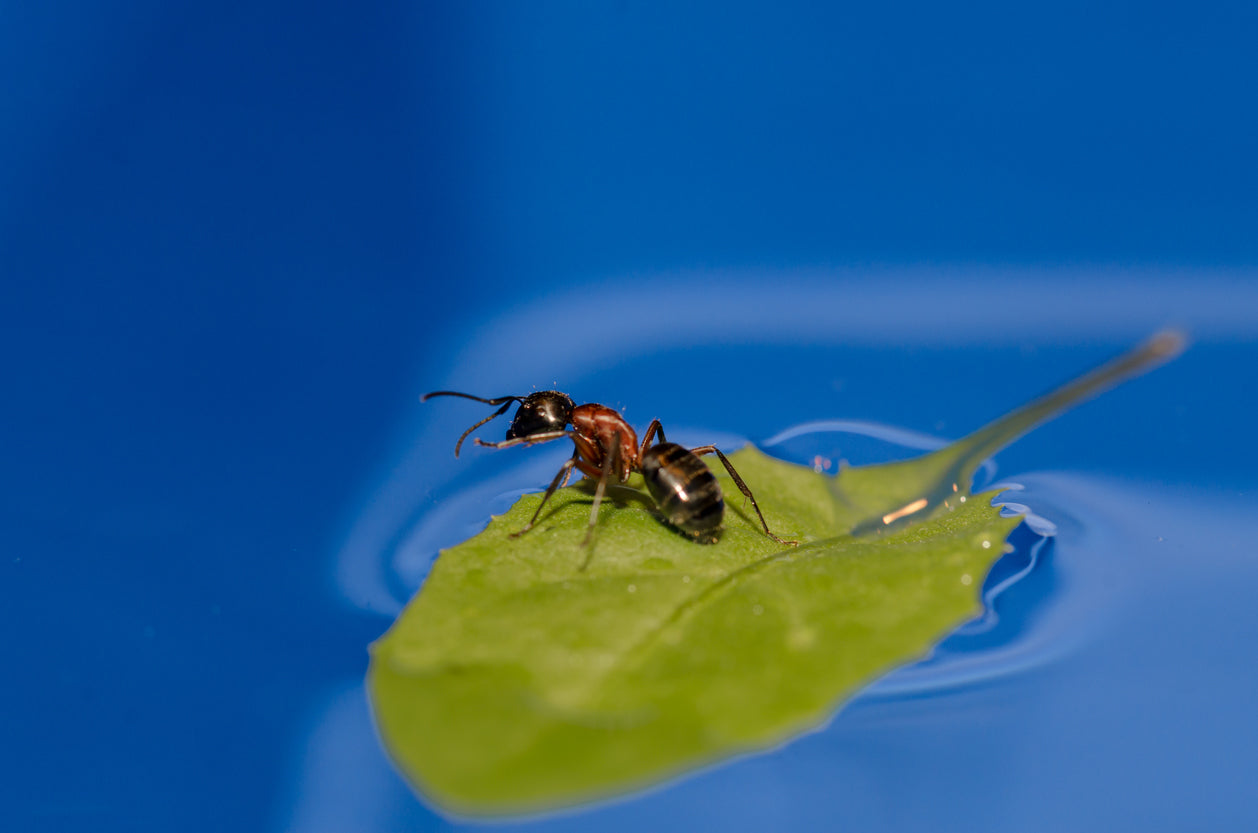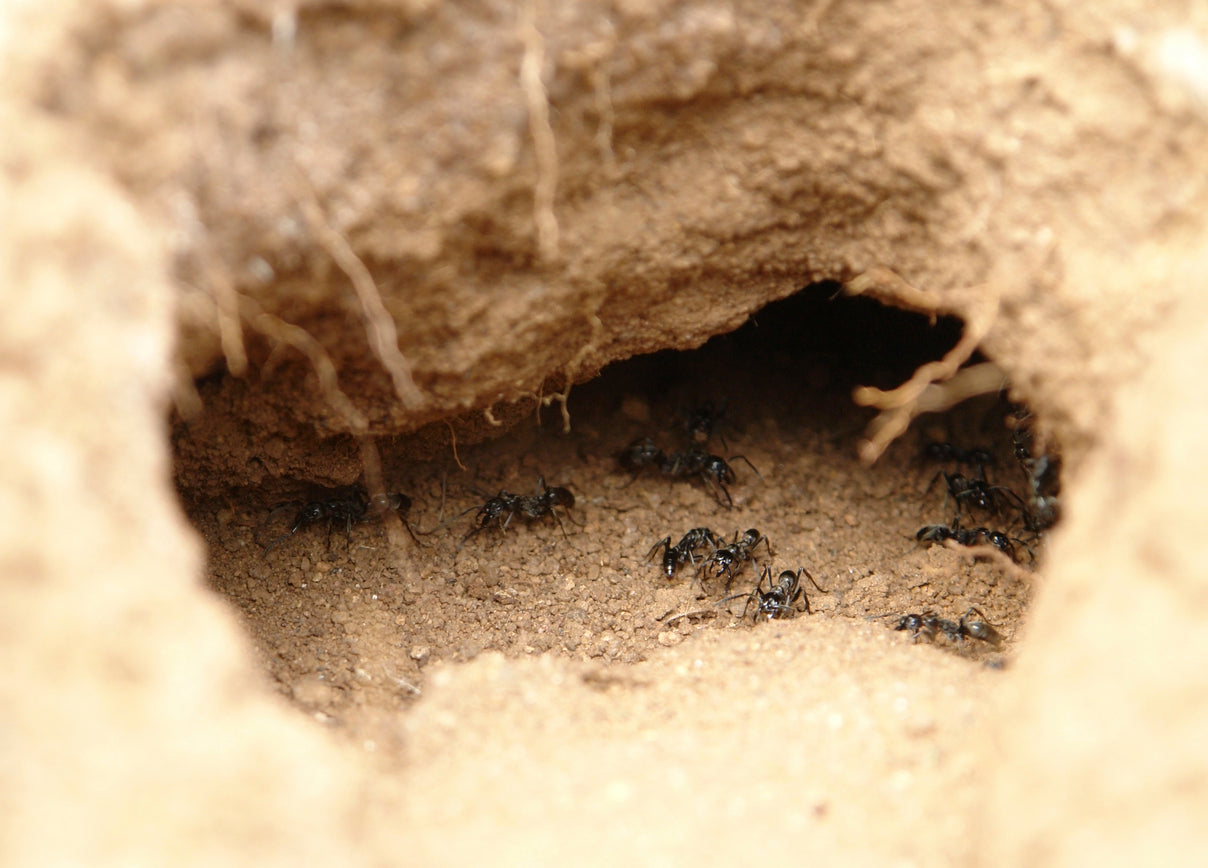Add description, images, menus and links to your mega menu
A column with no settings can be used as a spacer
Link to your collections, sales and even external links
Add up to five columns
Add description, images, menus and links to your mega menu
A column with no settings can be used as a spacer
Link to your collections, sales and even external links
Add up to five columns

Life Cycle of a Harvester Ant
By Spencer McManamna March 25, 2024 7 min read
Get an unforgettable look at the hidden lives of Harvester Ants! In this article, you'll learn all about their fascinating life cycle, their unique behaviors, mating habits and more!
Harvest Ant Mating
Harvester ants typically mate during the warmer months of the year, often in late spring or early summer. This timing coincides with favorable environmental conditions and ample food availability, which are essential for successful mating and colony establishment.
Harvester ants may mate multiple times during the mating season, depending on factors such as colony size, reproductive fitness of individuals, and environmental conditions. Mating events can occur intermittently throughout the mating season, with peaks in activity during specific times when environmental conditions are optimal.
Winged males and females, known as alates, participate in mating flights, where they gather in large swarms to mate mid-air. Mating in flight increases the chances of genetic mixing among different colonies, promoting genetic diversity within the population.
Swarming behavior in harvester ants can synchronize with nearby colonies, leading to the formation of even larger swarms. This synchronization enhances the likelihood of successful mating by increasing the number of potential mates available to individuals participating in the mating flights.
Polygyny refers to the mating system in which males mate with multiple females, resulting in multiple queens within a single colony. In harvester ants, polygyny is common, with fertilized females becoming queens of their new colonies after mating. This reproductive strategy allows for the rapid expansion and establishment of new colonies, contributing to the overall success and persistence of the species.
Male harvester ants typically die soon after mating, as their sole purpose is to fertilize the queen(s) during the mating flight. Once they have fulfilled this role, their reproductive function is complete, and they no longer play an active role in colony maintenance or reproduction.
Fertilized female harvester ants that successfully mate during the mating flights become the queens of their new colonies. After mating, the queens shed their wings and seek out suitable nesting sites to establish their colonies. Once established, the queen(s) begin laying eggs, initiating the development of the worker caste and the growth of the colony.
Sexual reproduction in harvester ants involves the fusion of genetic material from two individuals, resulting in genetic diversity among offspring.
Asexual reproduction, on the other hand, does not involve the fusion of genetic material and typically produces offspring that are genetically identical to the parent.
Sexual reproduction allows for genetic diversity, which can increase the adaptability and resilience of the population to changing environmental conditions. Asexual reproduction may provide advantages in terms of rapid reproduction and colonization, as it does not rely on finding mates or engaging in mating behaviors.
Stage One: Ant Eggs
Before laying eggs, queen harvester ants undergo a process called "de-alation," during which they detach and shed their wings. This typically occurs shortly after the mating flight, as the queens prepare to establish new colonies. The loss of wings is a physical transformation that signifies the transition from a dispersal phase to a nesting phase.
After shedding their wings, queen harvester ants begin the process of digging nests in the ground to establish their colonies. Using their mandibles and legs, they excavate soil and create underground chambers and tunnels. The nesting site is carefully chosen based on factors such as soil composition, moisture levels, and protection from predators and environmental stressors.
Harvester ant eggs are small, oval-shaped structures typically measuring around 1 to 2 millimeters in length. They are pearly white or translucent in color and may appear slightly gelatinous. Queen ants lay eggs in clusters within the chambers of the nest, often protected by worker ants and located in areas with optimal temperature and humidity for development.
Worker ants play a crucial role in protecting the eggs from predators and environmental hazards. They exhibit behaviors such as grooming, carrying, and tending to the eggs to ensure their safety and well-being. Worker ants may also form a protective barrier around the egg clusters, using their bodies to shield them from potential threats.
The incubation period for harvester ant eggs varies depending on factors such as species, temperature, and humidity. Generally, it takes around 2 to 4 weeks for harvester ant eggs to hatch. During this time, the queen and worker ants maintain the nest environment, regulating temperature and humidity to optimize conditions for egg development.
In summary, queen harvester ants lose their wings and dig nests in the ground prior to laying eggs. The eggs are small, white, and oval-shaped, laid in clusters within the nest chambers. Worker ants protect the eggs from predators and environmental threats, ensuring their safety and facilitating their development. The incubation period for harvester ant eggs typically ranges from 2 to 4 weeks before they hatch into larvae.
Stage Two: Ant Larvae
A larva is the immature, juvenile stage of an insect's life cycle that typically follows hatching from an egg. Larvae often undergo significant growth and development before transitioning into the pupal stage, during which they may exhibit distinct physical characteristics and behaviors compared to adults.
During the larval stage, Harvester ant larvae are legless and worm-like in appearance. They have soft, whitish bodies and are relatively immobile compared to adult ants. Harvester ant larvae lack eyes and antennae, and their main function at this stage is to consume food and grow.
Harvester ant larvae are fed by worker ants, who regurgitate partially digested food to them. The primary food sources for Harvester ant larvae include proteins, sugars, and fats derived from plant and animal matter gathered by foraging worker ants. A single Harvester ant larva can consume a significant amount of food during its larval stage, with its consumption rate varying depending on factors such as larval size, nutritional requirements, and food availability within the colony.
The duration of the larval stage in Harvester ants can vary depending on factors such as species, environmental conditions, and colony needs. Generally, Harvester ant larvae spend around 2 to 4 weeks in the larval stage, although this timeframe can be influenced by factors such as temperature, humidity, and food availability.
During the larval stage, Harvester ant larvae undergo a series of molts, shedding their exoskeletons to accommodate growth in a process known as ecdysis. Each molt represents a new developmental stage called an instar. Harvester ant larvae typically go through several instars before reaching the pupal stage. As they grow and develop, the larvae molt their exoskeletons, with each molt marking a transition to a new instar characterized by changes in size and morphology. The number of instars can vary among individual larvae and is influenced by factors such as nutrition and environmental conditions. Once the larvae have completed their final instar, they are ready to enter the pupal stage and undergo metamorphosis into adult ants.
Stage Three: Ant Pupae
A pupa is the intermediate stage in the life cycle of insects undergoing complete metamorphosis, such as ants, beetles, and butterflies. During this stage, the insect undergoes significant internal restructuring and development, transitioning from the larval form to the adult form.
In the pupal stage, Harvester ants undergo remarkable transformations as they develop into adults. The pupal stage is characterized by a quiescent period during which the ant's body undergoes internal restructuring and differentiation of adult structures. At this stage, the ant's body is enclosed within a protective outer covering, often referred to as a cocoon or pupal case.
The cocoon of Harvester ants is made from silk produced by specialized glands located in the larvae's mouthparts. As the larva prepares to enter the pupal stage, it secretes silk to create a protective covering around its body. The silk is spun into a tough, papery material that forms the outer casing of the cocoon. This cocoon provides protection for the developing pupa, shielding it from predators, pathogens, and environmental stressors during the metamorphosis process.
The duration of the pupal stage in Harvester ants can vary depending on factors such as species, temperature, and colony needs. Generally, Harvester ants spend around 1 to 2 weeks in the pupal stage, although this timeframe can be influenced by environmental conditions and individual developmental rates. During this time, the ant undergoes internal changes as it transforms from a larva into an adult, developing characteristic features such as wings, antennae, and functional reproductive organs.
In summary, the pupal stage of Harvester ants is a critical period during which significant internal restructuring and development occur, leading to the transformation from larva to adult. The ant's body is enclosed within a protective cocoon made from silk produced by the larvae, providing shelter and protection during the metamorphosis process. Harvester ants spend approximately 1 to 2 weeks in the pupal stage before emerging as fully developed adults ready to contribute to the colony's activities.
Stage Four: Adult Ant
At the final stage of development, adult Harvester ants exhibit a well-defined body structure characteristic of ants. They have three distinct body segments: the head, thorax, and abdomen. The head bears a pair of antennae used for sensory perception, mandibles for feeding and defense, and compound eyes for vision. The thorax is where the six legs are attached, with each leg equipped with specialized structures for walking, climbing, and carrying food or other materials. The abdomen contains the digestive, reproductive, and respiratory organs, as well as the sting apparatus in female ants.
The time it takes for an adult Harvester ant to become capable of mating and reproducing varies depending on species-specific factors, environmental conditions, and individual physiological development. Generally, newly emerged adult ants require some time to mature sexually and develop reproductive capabilities. This maturation process may take a few days to a couple of weeks, during which time the ant may engage in other colony activities such as foraging, nest maintenance, and caring for brood.
The lifespan of adult Harvester ants can vary depending on species, environmental conditions, and individual factors. Typically, adult worker ants live for several weeks to several months, while queens can live for several years. During their lifespan, adult Harvester ants may reproduce multiple times, with queens laying eggs to produce new broods of workers, drones, and potential future queens. The frequency of reproduction depends on factors such as colony needs, environmental conditions, and the reproductive capacity of the queen. In well-established colonies, queens may produce new batches of eggs regularly to maintain and expand the colony population.
Explore the Harvester Ant Life Cycle with Insect Lore
Your adventure in the world of Harvester Ants isn't over! Get a glimpse of their hidden world with the Insect Lore Ant Mountain!
Related products
Also in Ants

What Ants Can Teach Us About Working Together
March 19, 2025 6 min read
Just as ants collaborate, relying on communication and coordination to complete complex tasks, humans thrive when working together, each individual bringing unique skills and perspectives to the table. In this article you will learn all about how ants work together, and what it can teach us about teamwork!

How Long Can Ants Live Without Food?
November 04, 2024 4 min read
You may know about the wide variety of foods ants like to munch on, but have you ever wondered how long they can go without a meal? The answer may surprise you! If you've got an appetite to learn more, let's dig in.

Ant Hills, Nests, and Tunnel Systems
November 04, 2024 6 min read
Can you dig it? One of the ant's most fascinating qualities is their ability to work together to create elaborate tunnel communities. But have you ever wondered how this process starts, and how they're able to create such structures? Read on to discover how our tiny friends are able to make such BIG habitats!

Enter Your Voucher Code Below
If you are experiencing difficulty redeeming your voucher on your desktop, please use a mobile device for a better redeeming experience.

We are unable to combine redemption fees. If you are redeeming 1-5 voucher codes, please complete separate purchases through our website for each voucher. If you are redeeming 6+ vouchers, please email us at customerservice@insectlore.com with your voucher codes and shipping address and we'll send you a custom invoice for payment.
Thank you for Redeeming your voucher!
You redeemed a $title

Don't miss this special one Time Offer.
Check the Box to Add this Special Offer to your Cart

Don't miss this special one Time Offer.
Check the Box to Add this Special Offer to your Cart
It looks like you are an Insect Lore UK/EU customer! You are visiting the Insect Lore USA website.
Click Insect Lore UK/EU website to be redirected to insectlore.co.uk.




